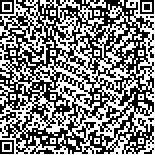曾和松,刘正湘,刘晓春.人参皂甙Rb1与Re抗大鼠实验性缺血再灌注心肌细胞凋亡及相关基因蛋白表达[J].中华物理医学与康复杂志,2003,(7):.-
扫码阅读全文

|
| 人参皂甙Rb1与Re抗大鼠实验性缺血再灌注心肌细胞凋亡及相关基因蛋白表达 |
|
| |
| DOI: |
| 中文关键词: 人参皂甙Rb1 人参皂甙Re 缺血再灌注 心肌细胞凋亡 基因表达 |
| 英文关键词: Ginsenoside Rb1 Ginsenoside Re Ischemia/reperfusion Cardiomyocyte apoptosis Gene expression |
| 基金项目: |
|
| 摘要点击次数: 3511 |
| 全文下载次数: 3859 |
| 中文摘要: |
| 目的观察人参皂甙Rb1和Re对缺血再灌注心肌细胞凋亡及Bcl-2、Bax、Bad、Fas基因蛋白表达的影响,探讨人参皂甙Rb1和Re抑制心肌细胞凋亡的可能机制。 方法结扎Wistar大鼠左冠状动脉前降支(LAD),建立大鼠缺血再灌注动物模型;采用透射电镜、缺口末端标记法检测心肌凋亡细胞,利用光学显微镜进行细胞计数;免疫组织化学检测Bcl-2、Bax、Bad、Fas基因蛋白表达,并利用图象分析系统测量平均光密度值进行定量分析。 结果①假手术组未发现心肌凋亡细胞;缺血再灌注组心肌凋亡细胞数为134.45±45.61个/视野,Rb1治疗组为51.65±13.71个/视野,Re治疗组为90.66±19.22个/视野,3组间有显著差异(P<0.01);②缺血再灌注组、Rb1治疗组及Re治疗组Bcl-2、Bax、Bad、Fas基因的表达均较假手术组明显增加(P<0.05),Rb1治疗组和Re治疗组Bcl-2的表达与缺血再灌注组比较无明显差异(P>0.05),而Bax、Bad、Fas的表达明显下降(P<0.05),Rb1抑制Bax基因蛋白表达的效应较Re更为明显(P<0.05)。Rb1治疗组和Re治疗组Bcl-2/Bad、Bcl-2/Bad以及Bcl-2/Fas比值均较假手术组及缺血再灌注组明显增加,Rb1治疗组Bcl-2/Bax比值较Re治疗组增大。 结论心肌缺血再灌注诱导心肌细胞凋亡,人参皂甙Rb1和Re治疗则可以显著减少缺血再灌注心肌细胞的凋亡,其机制可能是抑制了促凋亡基因Bax、Bad、Fas的表达,并使Bcl-2/Bax、Bcl-2/Bad以及Bcl-2/Fas比值增大。Rb1抑制心肌细胞凋亡的作用较Re更好。 |
| 英文摘要: |
| Objective To observe the effect of ginsenoside Rb1 and Re on cardiomyocyte apoptosis and expression of Bcl-2, Bax, Bad and Fas gene proteins after acute ischemia and reperfusion in rats and elucidate the possible mechanisms. MethodsThe ischemia-reperfusion heart model was made by ligating the left anterior descending branch of coronary artery in Wistar rats. The apoptotic cardiomyocytes were confirmed with transmission electron microscopy and counted with in situ nick labeling (TUNEL) method and light microscopy. The expression of Bcl-2、Bax、Bad and Fas gene proteins were studied by immunohistochemical staining. Mean optical density (OD) value of the gene proteins expression were quantitatively examined by image analysis system. ResultsA.The apoptotic cardiomyocytes were not observed in the sham-operation group. The number of the apoptotic cells were 134.45±45.61/field in the ischemia- reperfusion group, 51.65±13.71/field in the ginsenoside Rb1-treated group and 90.66±19.22/field in the ginsenoside Re-treated group, respectively. The differences were significant among the three groups (P<0.01); B.Bcl-2、Bax、Bad and Fas gene expressions were increased significantly in the ischemia-reperfusion group,ginsenoside Rb1 and Re-treated group compared with the sham-operation group (P<0.05). There were no significant difference in terms of the Bcl-2 gene expression among the ginsenoside Rb1 and Re-treated group and the ischemia-reperfusion group (P>0.05), but Bax、Bad and Fas gene expression were decreased significantly in the ginsenoside Rb1 and Re-treated group as compared with the ischemia-reperfusion group (P<0.05). Expression of Bax gene protein was inhibited significantly in the ginsenoside Rb1-treated group as compared with the ginsenoside Re-treated group (P<0.05). The ratios of Bcl-2/Bax,Bcl-2/Bad and Bcl-2/Fas were increased significantly in the ginsenoside Rb1 and Re-treated group as compared with those in the ischemia-reperfusion group and sham-operation group. The ratio of Bcl-2/Bax was greater in the ginsenoside Rb1-treated group compared with the ginsenoside Re-treated group. Conclusion Myocardial ischemia- reperfusion could induce cardiomyocyte apoptosis, and ginsenoside Rb1 and Re could significantly inhibit cardiomyocyte apoptosis induced by ischemia-reperfusion in rats. Ginsenoside Rb1 and Re inhibited cardiomyocyte apoptosis by inhibiting expression of pro-apoptotic Bax, Bad and Fas gene and raising the protein expression ratios of Bcl-2/Bax, Bcl-2/Bad and Bcl-2/Fas. Effect of Ginsenoside Rb1 was more effective in inhibiting cardiomyocyte apoptosis than ginsenoside Re. |
|
查看全文
查看/发表评论 下载PDF阅读器 |
| 关闭 |